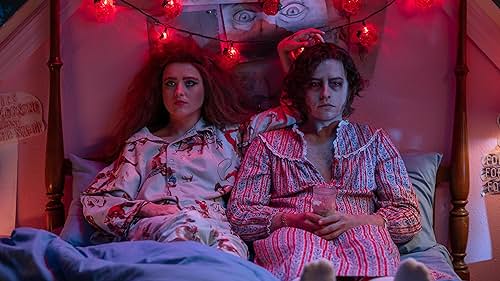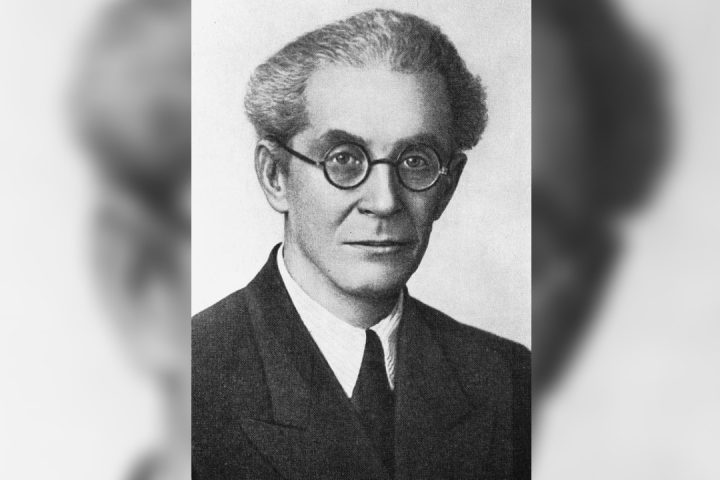Get ready for a twisted take on a sci-fi legend! “Lisa Frankenstein,” from director Zelda Williams and writer Diablo Cody, throws us into the 1980s, where a teenage mad scientist named Lisa seeks more than just test tubes and beakers – she wants love. In this gender-flipped “Weird Science” twist, our Goth heroine resurrects the charming corpse of a Victorian gentleman. Can she mold him into her perfect partner, all while keeping his decay in check?
This latest adaptation follows hot on the heels of Yorgos Lanthimos’ “Poor Things,” another feminist reimagining of Mary Shelley’s classic. Both films empower the female perspective, one placing the scientist at the helm and the other transforming the monster into a woman. These bold choices tap into a rich vein of feminist interpretations of Frankenstein, a tradition that stretches back to the novel’s very origins. It’s safe to say,
The writer Mary Wollstonecraft Shelley was 18 years old when she wrote the novel, but she had already had a difficult existence. Her mother, feminist pioneer Mary Wollstonecraft, died 11 days after giving birth to her daughter. She was raised by a kind anarchist father but had a difficult connection with her stepmother. She ran away with the novelist Percy Bysshe Shelley when she was 17, despite the fact that he was already married. For two years, they experienced ostracism across England, as well as mounting debts and the loss of their first child.
In the notoriously wet summer of 1816, Mary Wollstonecraft Godwin, not yet married to Percy Shelley (whose wife Harriet tragically died by suicide that year), embarked on a holiday to Geneva. Despite her youth and unmarried status, her unconventional views already sparked whispers among polite society. During this trip, forced indoors by incessant rain, the group, including the renowned Lord Byron, proposed a chilling challenge: each guest would write a horror story.
Drawing inspiration from a vivid nightmare featuring “the hideous phantasm of a man stretched out,” reanimated by “a pale student of unhallowed arts,” Mary penned a short story that blossomed into a full-fledged novel. Published in 1818 as “Frankenstein; or, The Modern Prometheus,” her work not only captivated readers but also cemented her place in literary history.
While Mary Shelley described Frankenstein as her “hideous progeny” in the novel’s foreword, claiming it sprang from “happy days,” the reality was far grimmer. In the two years following the Geneva holiday where the idea sparked, her life unraveled. She lost two infants, and even the birth of her son, Percy Florence, couldn’t erase the grief. The year 1818, which saw the publication of her masterpiece, also forced her and her family into exile in Italy. Depression haunted both Mary and Percy, who tragically died at 29 in a boating accident four years later, leaving Mary a widow at just 25.
It’s not hard to see the echoes of the feminine struggle throughout Frankenstein. It is a story of bodily autonomy and the lack thereof when you are forced into a world you did not consent to. Dr. Frankenstein creates life and is immediately wracked with guilt and shame for what he has created, the ultimate taboo of a parent rejecting their child. The mere idea of creating life without pregnancy feels radical even today as arguments over IVF and surrogacy remain at the forefront of the so-called culture wars. You cannot divorce the novel from the idea of creation and how it is so explicitly defined in terms of gender. Dr. Frankenstein is a man who creates another man, but that doesn’t make what he does fatherhood, necessarily.
Adaptations and re-imaginings of Frankenstein—and there have been many over the past 200 years—didn’t immediately focus on what feels like an obvious detail. The folly of man versus the might of God didn’t seem instinctively gendered to many, and that’s easy to understand. Yet it’s in those adaptations where women are front and center that the novel’s undeniable feminism comes to the forefront.
James Whale’s Frankenstein remains one of the great horror films of all time, but its sequel, 1935’s Bride of Frankenstein, might be even greater. The film opens with Mary Shelley and her friends on that stormy Swiss night telling them that there is more to the story of Frankenstein than first imagined. In the film, we see that the monster survived the events of the previous film, as did Dr. Frankenstein. The latter’s former mentor, the eccentric and lascivious Dr. Septimus Pretorius, wants to make a mate for the creature, a bride who will accept his monstrous nature. In the novel, Frankenstein contemplates making a female creature but destroys her before bringing her to life. Yet their new creation, played by Elsa Lanchester (who played Mary Shelley in the opening scene), also rejects him.
Gay film historian Vito Russo noted the campness of Pretorius and how the film read as extremely queer in its take on the binary nature of gender: Make a man, make a woman, and force them together because that’s what society wants. It also creates a fascinatingly feminist slant to the narrative. The bride is intended to be a placating force for the monster, both wife and mother who will love him unconditionally because she’s been made for that purpose like all good Victorian women. She instantly refuses it, calling into question why such a concept would ever work.
Over the decades, the bride would become more a fashion icon than a prominent cultural figure (not that we blame anyone for taking inspiration from her amazing look). Frankenstein adaptations and revamps stayed pretty male-focused, from Christopher Lee in the Hammer franchise to Herman Munster to Dean Koontz’s rewrites. In 1985, The Bride brought the character to the forefront for a quasi-sequel to the novel that imagined how Frankenstein (played by Sting?) would deal with a female creation with whom he falls in love. Eva (because of course her name is a take on Eve) is not monstrous in appearance or attitude. Her evolution is more of a Pygmalion situation, although she ultimately rejects these trappings. When informed of her monstrous creation, she flees from Frankenstein and runs off with the male monster. It’s a cheeky callback to Whale’s film, offering a sort of happily-ever-after while still having the bride deny man’s intention for her. If the options are polite society and all its misogynistic restraints or life among your fellow outcasts, it’s no wonder the bride chooses the latter.
Mary Shelley’s Frankenstein, the messy but fascinating adaptation by Kenneth Branagh, has the bride reject everyone and everything. Frankenstein, played by the director as a tortured romantic hero with well-oiled abs, brings his fiancée Elizabeth (Helena Bonham Carter) back to life after the monster kills her by putting her head onto the body of a servant. Both Frankenstein and the monster desire her, but when Elizabeth realizes what has happened to her, she is disgusted, rejects both suitors, and commits suicide by self-immolation. If women exist to be the playthings of men, created or otherwise, what option is left for those who say no?
Showtime’s “Penny Dreadful” pushes the boundaries of the classic Frankenstein narrative by introducing Brona, a captivating Irish sex worker played by Billie Piper. We witness her final breaths as she succumbs to consumption, only to be rescued (and arguably re-victimized) by Dr. Frankenstein’s reanimation experiment.



